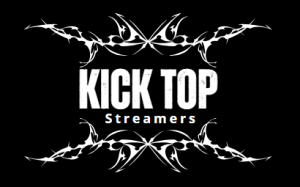In today’s digital era, livestreaming has exploded in popularity, with Twitch leading the charge as the top platform for gamers, artists, and creators of all kinds. Whether you’re a streamer wanting to archive your gameplay or a fan looking to rewatch memorable streams, the ability to Capture Twitch content effortlessly is more important than ever. With millions of hours streamed every day, tools and strategies that simplify this process are invaluable for preserving and sharing those moments.
One of the main reasons people want to capture Twitch content effortlessly is to repurpose it for other platforms like YouTube, TikTok, or Instagram. Social media thrives on bite-sized, engaging content, and by saving highlights from Twitch, creators can expand their reach far beyond the live broadcast. Efficiently capturing your stream content allows you to create reels, tutorials, reaction videos, or even full-length compilations without having to record everything from scratch again.
To capture Twitch content effortlessly, streamers often use built-in features such as Twitch’s “Video on Demand” (VOD) system. This function automatically saves past broadcasts, allowing streamers to download or edit them later. However, these are typically only stored for a limited time (7 to 60 days depending on your account type), making it crucial to act quickly if you want permanent access. Thankfully, there are also a variety of third-party tools that allow both viewers and creators to download or record Twitch streams with minimal hassle.
Another way to capture Twitch content effortlessly is through screen recording software like OBS Studio, Streamlabs, or even simple tools like Xbox Game Bar or QuickTime Player. These tools offer real-time recording features and custom settings such as frame rate, resolution, and audio capture. For streamers, using the same software for both streaming and local recording can simplify the process immensely. By optimizing settings and creating a workflow that includes automatic saving, it’s easier than ever to preserve content on the fly.
For viewers who want to capture Twitch content effortlessly, browser extensions and third-party websites can be useful. Tools like Twitch Leecher or Clipr allow users to download clips or full broadcasts from public Twitch channels, though respecting copyright and fair use policies is essential. These platforms offer intuitive interfaces and don’t require complex setup, making them ideal for casual users who want to save a favorite stream moment or hilarious clip.
Beyond the technical side, knowing when and what to capture is key to creating valuable content. If you’re a creator, set up markers or hotkeys during streams to flag exciting moments. Many streaming software programs allow you to timestamp or highlight sections in real time, making it easier to return and extract those golden segments. By being intentional and strategic, you not only save time but also ensure you’re getting content that resonates with your audience.
Cloud-based tools are also becoming popular for those wanting to streamline the process. Services like Eklipse, Medal.tv, and Zight offer automatic highlight detection using AI. These platforms monitor your stream and automatically create short clips based on crowd reactions, kill streaks, or other in-game events. This removes the manual work, allowing you to capture Twitch content effortlessly while focusing on creating.
Additionally, maintaining good file organization is essential when working with large volumes of Twitch content. Whether you’re storing raw footage or edited clips, label your files with dates, stream titles, and categories. This makes it significantly easier to retrieve specific moments and repurpose them later. Consider using cloud storage or external drives to keep your system from getting bogged down.
Legal considerations are also important when capturing and reusing Twitch content. If you’re saving or reposting content from other streamers, always get their permission or ensure the clip falls under fair use. Twitch’s community guidelines also prohibit unauthorized redistribution, especially of subscriber-only streams or paywalled content. Protect yourself by being transparent and respectful of other creators’ intellectual property.
To get the most out of your captured content, consider learning basic video editing skills. Software like DaVinci Resolve, Adobe Premiere Pro, or free tools like Shotcut can help you cut, merge, and enhance your clips. Adding overlays, subtitles, or sound effects can greatly improve viewer engagement. Even with minimal experience, tutorials and templates make it easy to produce polished content from your Twitch recordings.
In summary, whether you’re a casual viewer, aspiring content creator, or seasoned streamer, learning to capture Twitch content effortlessly can unlock a whole new world of possibilities. From preserving memories to building an audience across platforms, the ability to record and reuse content is a valuable skill in the streaming world. With the right tools and strategies, what once felt like a technical challenge can become a seamless part of your creative workflow.
